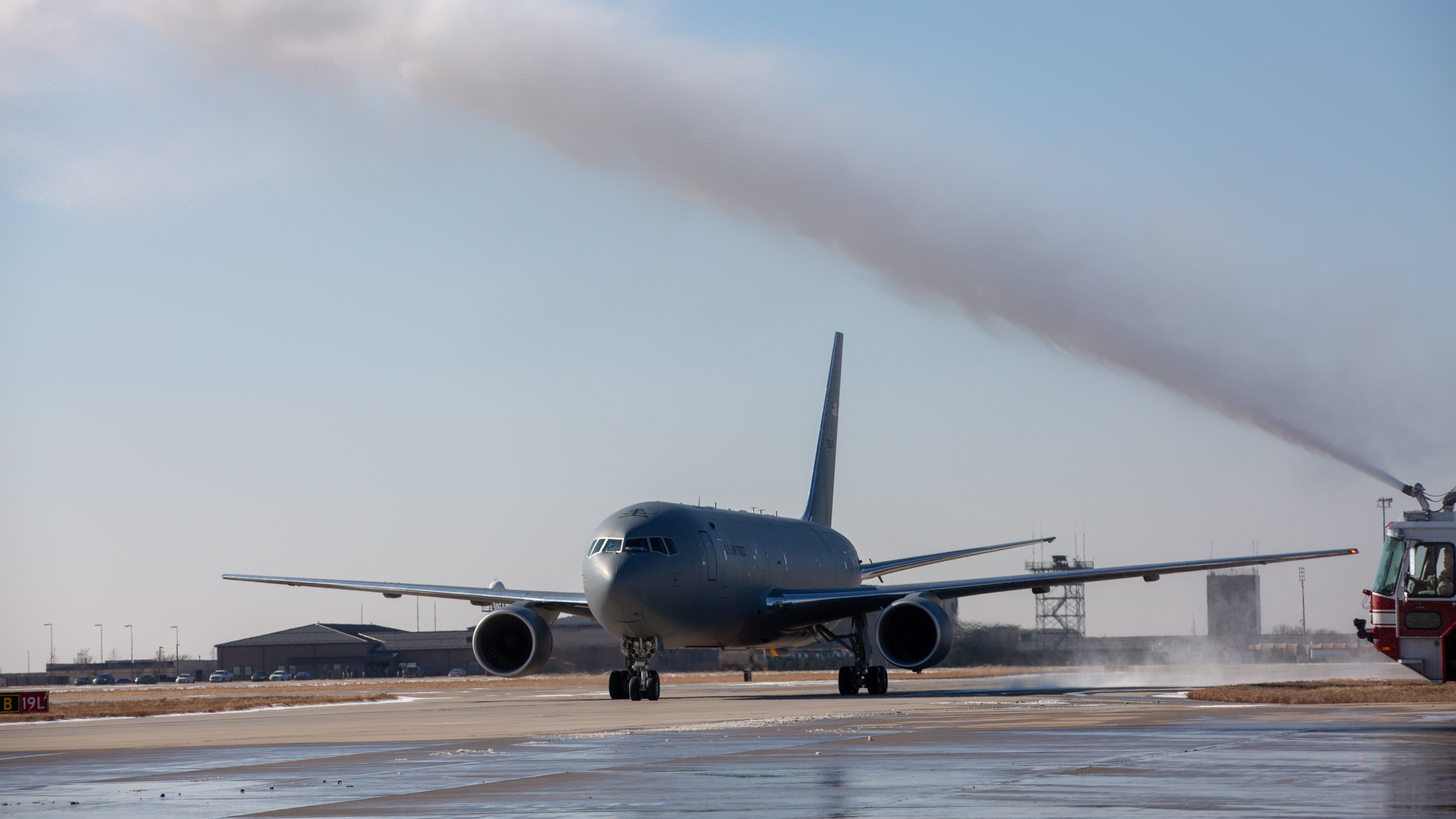WASHINGTON — After a three month ban on carrying cargo and passengers, the first KC-46 tanker has received new cargo locks that will allow flight restrictions to be removed, the U.S. Air Force announced Friday.
Following the successful installation and testing of a new cargo lock design, the Air Force on Dec. 18 officially declared the problem, which it had labeled a category 1 deficiency, as “closed." The service uses the term “category 1” to describe serious technical issues that could endanger the aircrew and aircraft or have other major effects.
“KC-46A integration represents an important step in recapitalizing our aging tanker fleet. While the program has not been without challenges, resolving this deficiency is a step in the right direction,” Will Roper, the Air Force’s acquisition executive, said in a statement.
The first KC-46 to introduce the new locks, based at McConnell Air Force Base in Kansas, has already resumed cargo operations, according to the Air Force.
RELATED

In a separate statement, Boeing spokesman Larry Chambers said the company has retrofitted four tankers with new locks. “We continue to work closely with the Air Force to outfit all delivered aircraft with the new locks,” he said.
The Air Force instated the flight restrictions in September after an incident occurred where the cargo locks on the bottom of the floor of the aircraft became unlocked during a flight, creating concerns that airmen could potentially be hurt or even killed by heavy equipment that suddenly bursts free during a flight. Defense News was the first to report the problem.
Aircrew reported that, over multiple legs of a trip overseas, they noticed that several restraints had become unlocked. Although the locks did not unlatch completely in those cases, it potentially presented a major safety risk to the crew and passengers, as a heavy pallet of cargo rolling around the cabin could cause injury or even unbalance the plane during flight.
Jamie Burgess, Boeing’s KC-46 program manager, told Defense News in September that the company planned to pitch a hardware fix to the tanker’s existing cargo locks.
“The concept for a fix is to put something in there that is a secondary latching like a spring or something like that that will hold it in place,” he said. “We’ve not finalized that, but it’s something that we’re working with the Air Force on, and the intent is to get some parts tested soon. We have some prototype parts that are being tested right now, and if the design works, then we would get it out there and get it on the airplanes. And we think that’s a relatively near-term thing.”
The U.S. Air Force plans to buy 179 KC-46s over the course of the program; the service accepted the first tanker earlier this year.
However, the program is experiencing growing pains. Most critically, the Air Force is not satisfied with the performance of its remote vision system, a series of sensors that KC-46 boom operators use to guide the boom into a receiving aircraft for refueling. Officials say it will take years to make the necessary hardware and software changes.
Valerie Insinna is Defense News' air warfare reporter. She previously worked the Navy/congressional beats for Defense Daily, which followed almost three years as a staff writer for National Defense Magazine. Prior to that, she worked as an editorial assistant for the Tokyo Shimbun’s Washington bureau.




